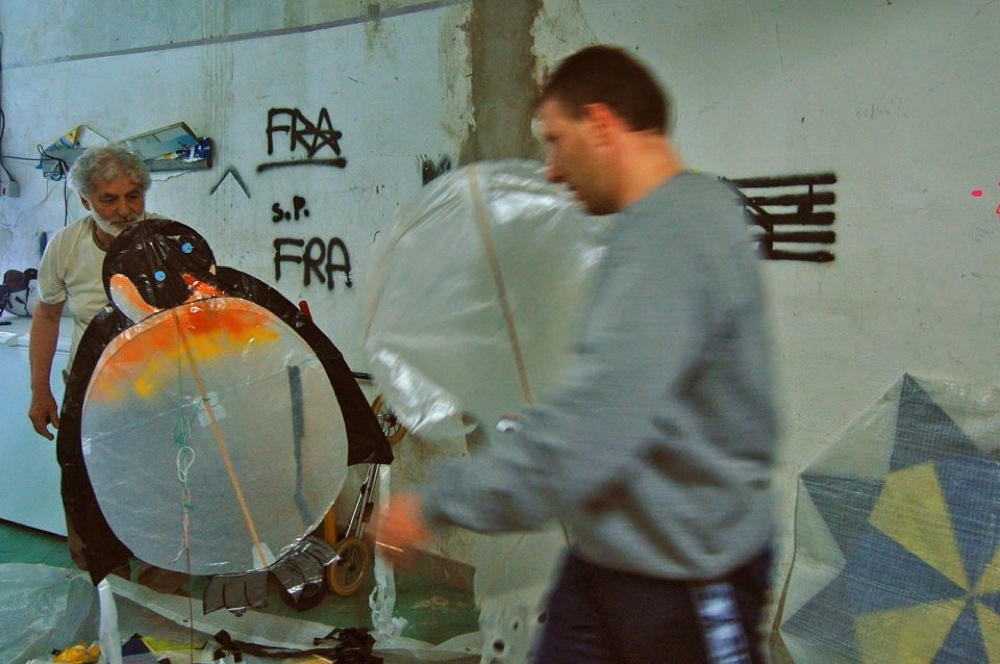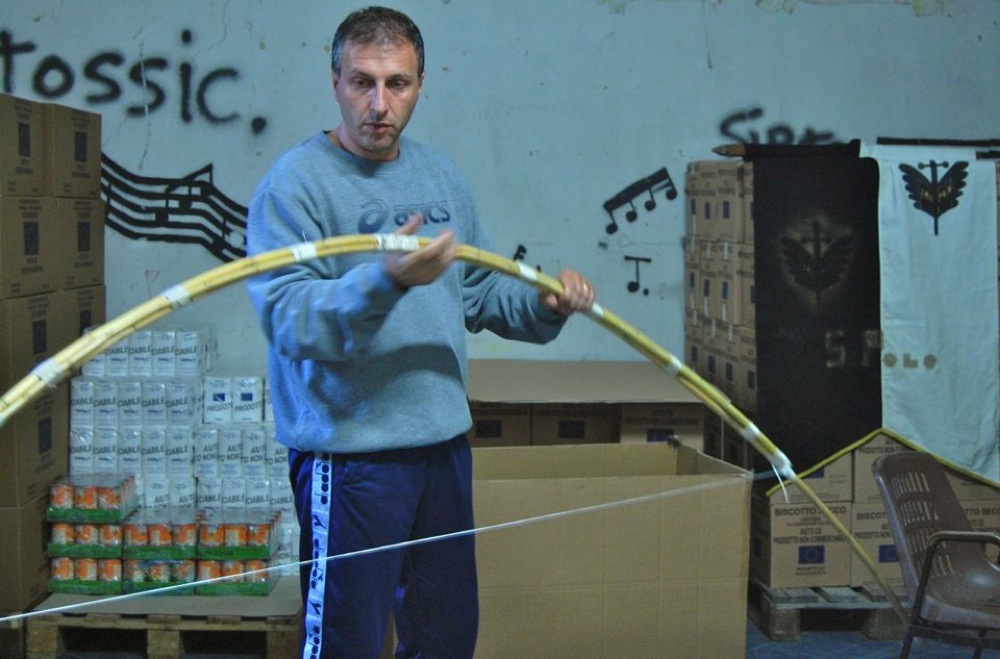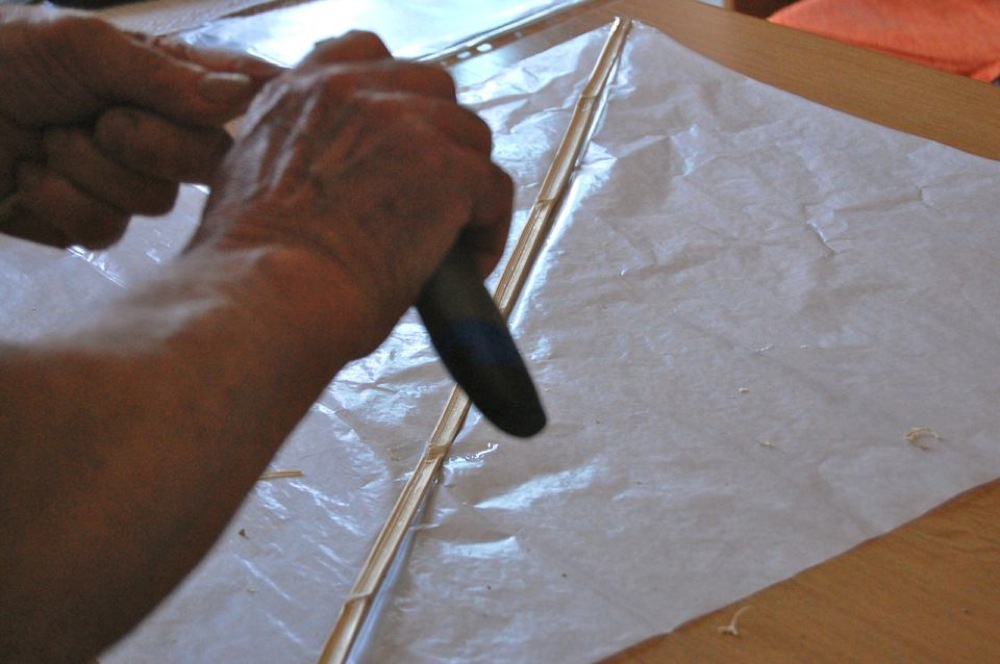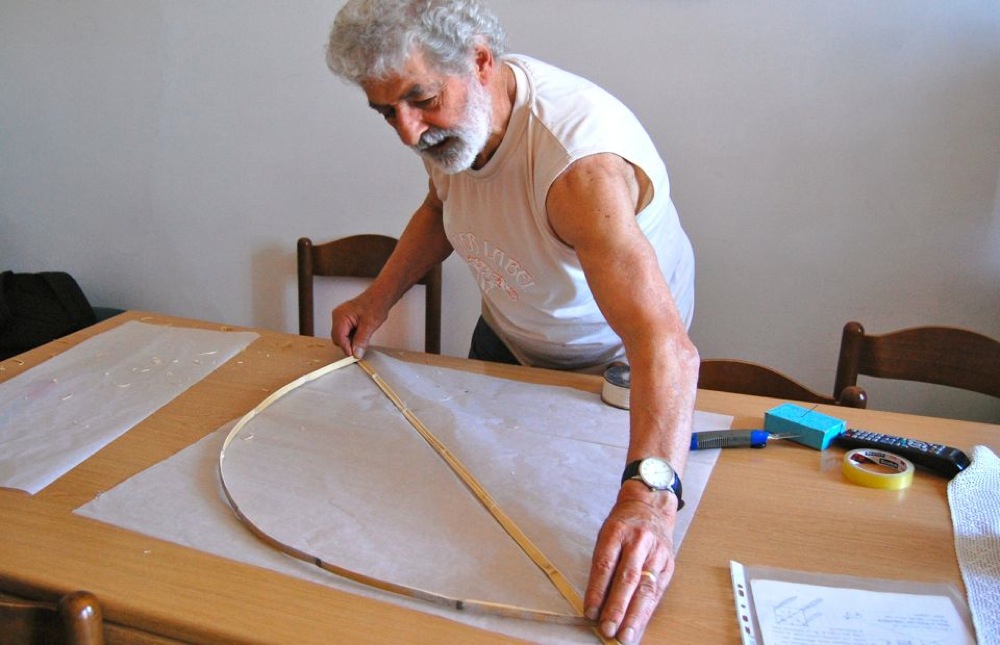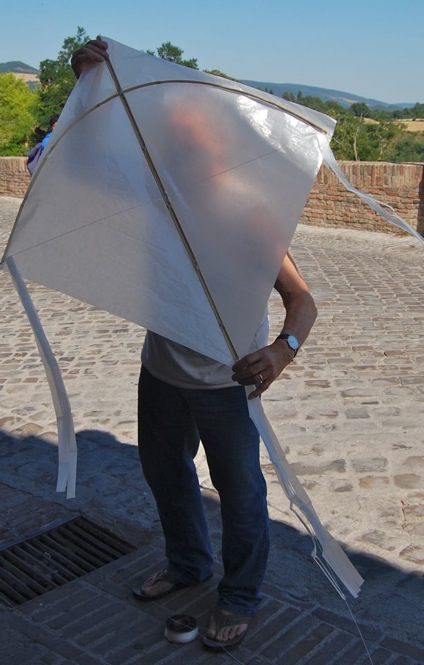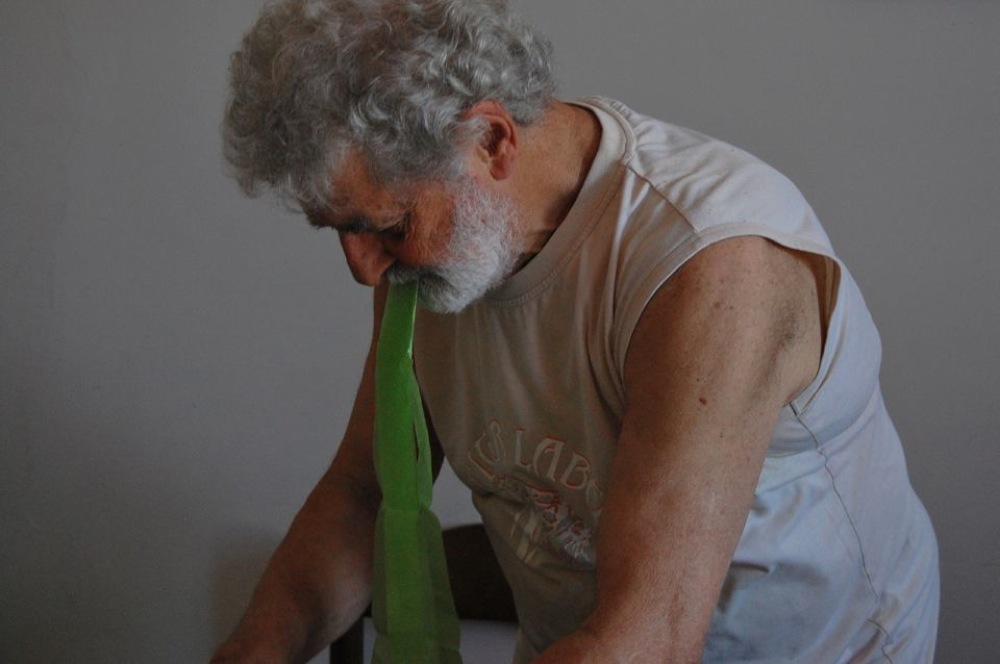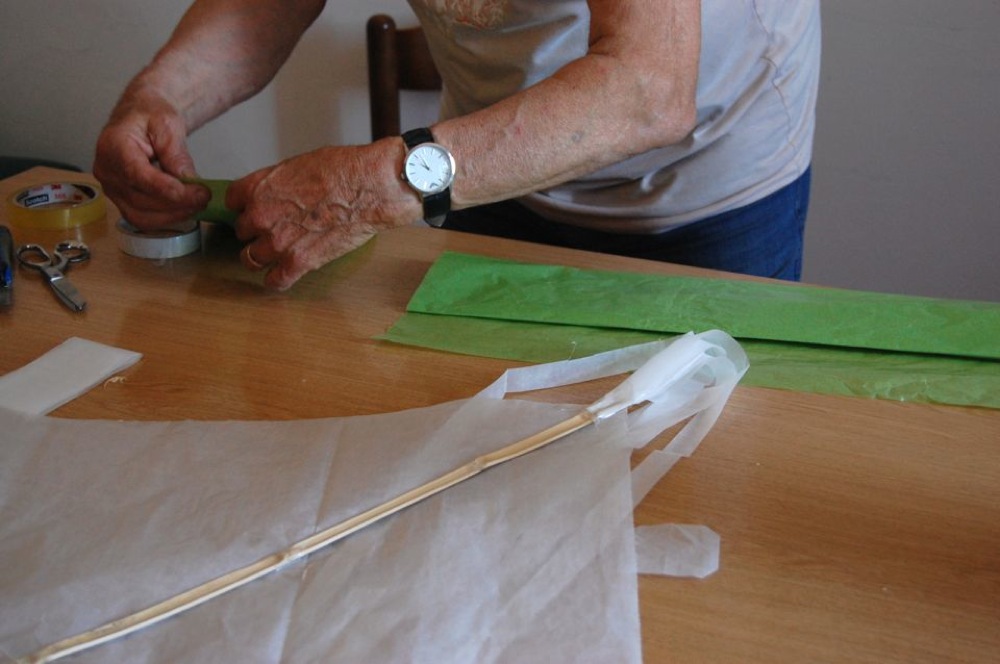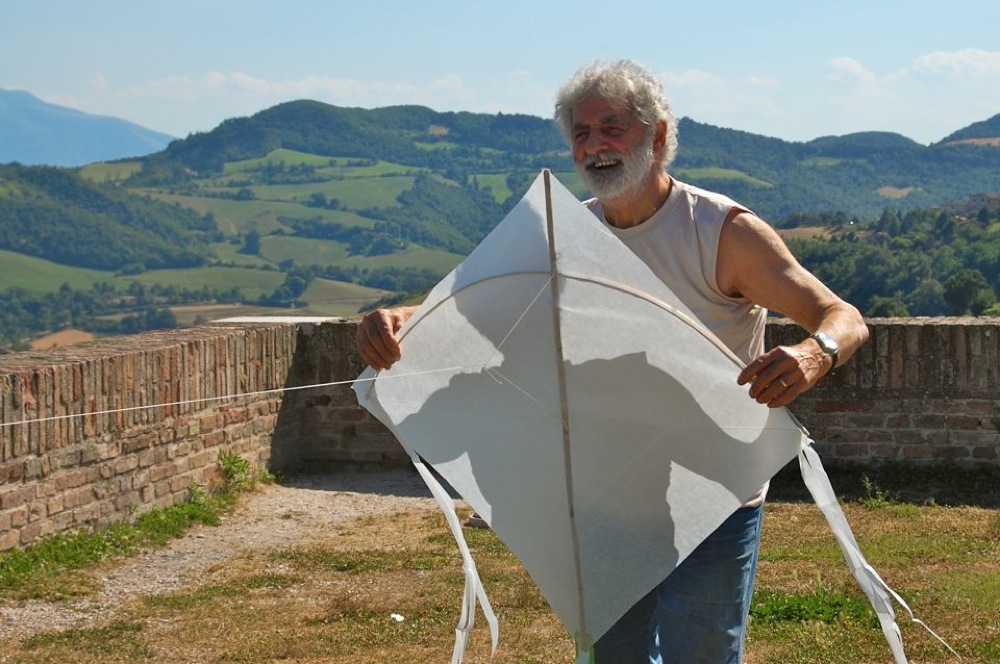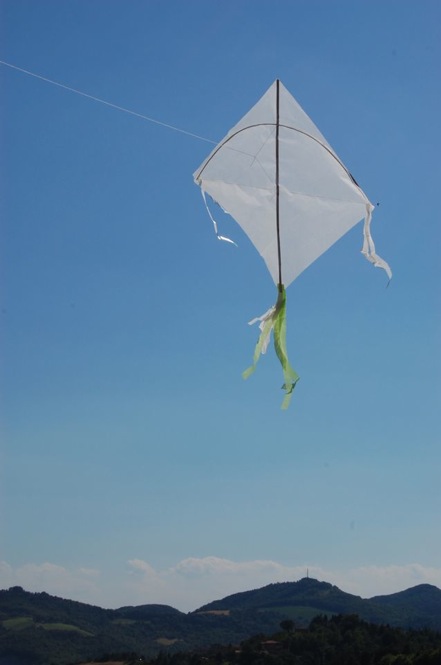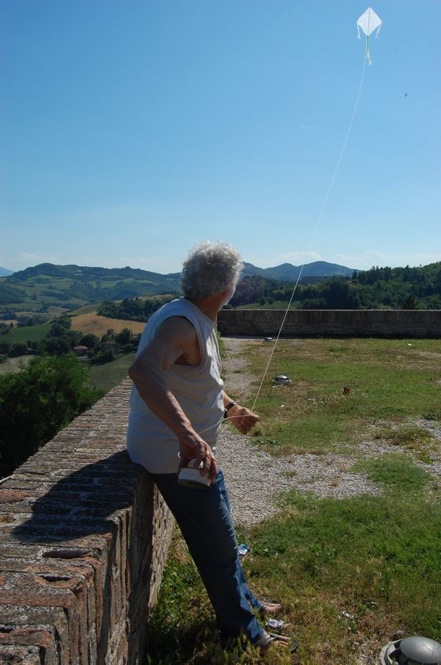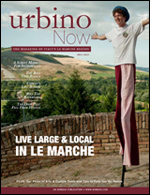Urbino’s neighborhoods use the centuries-old tradition of kite-making to engage in a fierce but friendly battle each September.
URBINO, Italy – Sirto Sorini, 78, and Mauro Patarchi, 44, huddle intently over a table filled with objects that resemble an arts and crafts project in the same manner two men in America might analyze the engine of a 1960’s muscle car.
The pair makes gestures to each other as they speak rapidly and begin working with the materials in front of them.
They are preparing for the annul kite festival known as the “Festa dell’aquilone” which has taken place annually in this small Italian town since 1944. Every September, the ten neighborhoods that comprise Urbino engage in a competition with a fierceness at odds with the vision of graceful kites.
Sir proudly displays the trophy he won in the competition last year in his front window. A passerby sees the old man through the window and shouts, “The king of the kites!”
This king of kites has been began making kites at the age of six, and has been teaching the people of his neighborhood his skills for over half a century.
He says that the people of Urbino had been building kites for centuries but it was not until 1952, eight years after the first competition, that the trophy and event were made official.
Every neighborhood has their own ancient origin which we decorate our kites with.
“Every neighborhood has their own ancient origin which we decorate our kites with,” he said, speaking through an interpreter.
Sirto and Mauro’s neighborhood is the team of “San Paulo” and accordingly many of their kites display the saint holding his sword vertically.
After decades of experience, kite makers become compulsive about the quality of their work for the festival, Sirto said. It is not unheard of for one person to construct between one thousand and twelve hundred kites in the two months leading up to event. When an experienced kite maker is finally content with a design construction can last between fifteen and twenty days and one hundred hours of craftsmanship, the two explained.
The festival is a source of neighborhood rivalry that follows kite makers their entire lives. Mauro, for example, began learning the art of kite building from Sirto when he was eight years old. He now lives in a different neighborhood in Urbino, but still identifies himself with and competes for the San Paulo team. Sirto laughs as Mauro says one of his neighbors calls him a traitor in the weeks leading up to the festival.
Mauro claims the purpose of the event originally was to unite the community by getting everyone to participate in an activity that was unique to the culture of the town. He says the purpose of the event now is to preserve the town’s identity.
Speaking in a prideful tone he exclaims, “We are the only place in Italy with such an event.”
On the day of the festival, thousands of kites are flown in the air on a bald hilltop within sight of the old city’s walls. A panel of 12 judges rates the kites in two categories, beauty and height of flight. Mauro competes in the distance class and is known for making kites that are two meters in diameter and soar as high as two kilometers high while Sirto has always focused on the creativity and design of his kites.
During the heated competition, rivals try to steer their kites into each other and cut one another’s strings. Sirto still speaks viciously about a man who one year destroyed both of his kites – then laughs stating he was the same way when he was younger.
However, Sirto and Mauro admit the competition actually brings the city together. After seeing the sky covered with intricately constructed and beautiful kites of all shapes and sizes, all ten of the neighborhoods come together and share a feast.
Video
Slideshow
Click on Image to Show in Lightbox.
